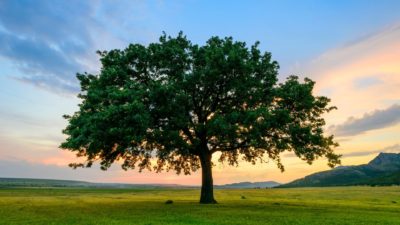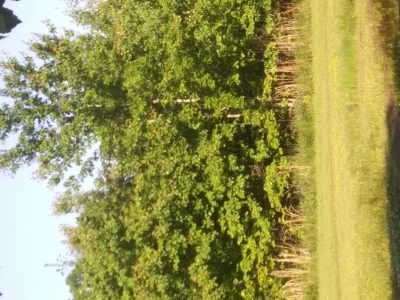
Searcy, AR (LP) — Since humans started cutting down forests, 46 percent of trees have been felled, according to a 2015 study in the journal Nature. About 17 percent of the Amazonian rain forest has been destroyed over the past 50 years, and losses recently have been on the rise. The reason that logging is so bad for the climate is that when trees are felled they release the carbon they are storing into the atmosphere, where it mingles with greenhouse gases from other sources and contributes to global warming accordingly.
Large scale tree cutting can lead to deforestation, a transformation of an area from forest to terrain with little vegetation. Construction Worker says, “People cut down trees for lots of reasons. This is because people need to build stores, houses, and other buildings. People also cut down trees to clear land for agricultural use. In some cases, trees are cut down for wood for fires to heat up their homes and cook food.” Plants create oxygen and absorb greenhouse gases. The destruction of trees may, therefore, encourage global warming. Construction Worker says, “When forests are cut down, not only does carbon absorption cease, but also the carbon stored in the trees is released into the atmosphere as CO2 if the wood is burned or even if it is left to rot after the deforestation process.” Changing temperatures can alter which organisms can survive in an ecosystem. The loss of trees and other vegetation can cause climate change, desertification, soil erosion, fewer crops, flooding, increased greenhouse gases in the atmosphere, and a host of problems for indigenous people. Construction Worker says, “The research says 15.3 billion trees are chopped down every year. It also estimates that 46% of the world’s trees have been cleared over the past 12,000 years.” With no trees, the land will heat up and dry out and the dead wood will inevitably result in enormous wildfires. This will fill the sky with soot that blocks out the Sun, causing failed harvests for several years and leading to worldwide famine. A new study published in Nature estimates the planet has 3.04 trillion trees. The research says 15.3 billion trees are chopped down every year. It also estimates that 46% of the world’s trees have been cleared over the past 12,000 years. Throughout the world, about 900 million trees are cut down annually. This equates to about 2.47 million trees cut down every day.
Every year from 2011-2015 about 20 million hectares of forest was cut down. Then things started to speed up. Since 2016, an average of 28 million hectares have been cut down every year. That’s one football field of forest lost every single second around the clock. Humans may not be affected directly but as a result of the climatic change, they have to suffer from the consequences of their actions. Deforestation leads to the change in climate. Construction Worker says, “It can take a couple of hours to half a day, or even an entire day, depending on the factors mentioned above.” This even further leads to the altered weather pattern. It can be characterized by the extreme heat or too much rainfall. Felling is the process of cutting down trees, an element of the task of logging. The person cutting the trees is a feller. Deforestation causes can either be direct or indirect. Among direct causes are: Natural causes such as hurricanes, fires, parasites and floods. Human activities such as agricultural expansion, cattle breeding, timber extraction, mining, oil extraction, dam construction and infrastructure development. Once their habitat is lost, they are on their way to extinction. According to recent estimates, the world is losing 137 species of plants, animals and insects every day to deforestation. A horrifying 50,000 species become extinct each year. Construction Worker says, “The report confirmed that major new roads increase traffic above the general traffic increases for their areas, with traffic increases of up to 47% over 20 years.” That actually suggests a rather dire estimate, that deforestation has been going on at a steadily increasing rate to the point that running out of trees, at least in the sense of significant forests and long-term, “old” growth forests, could completely disappear in foreseeable future.

In conclusion, cutting down the trees is bad for the environment. Animals can’t live in the forest if there are no trees left.
